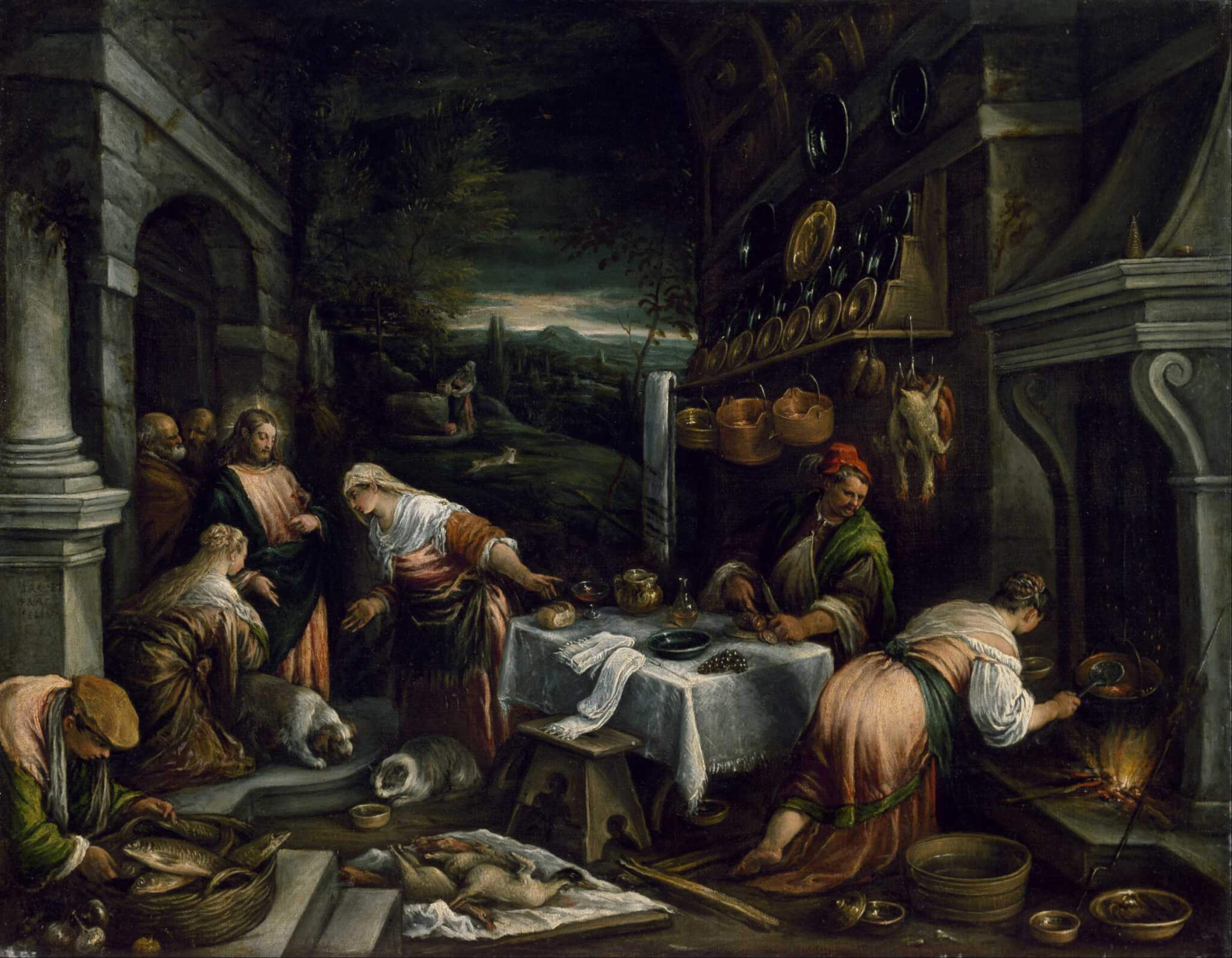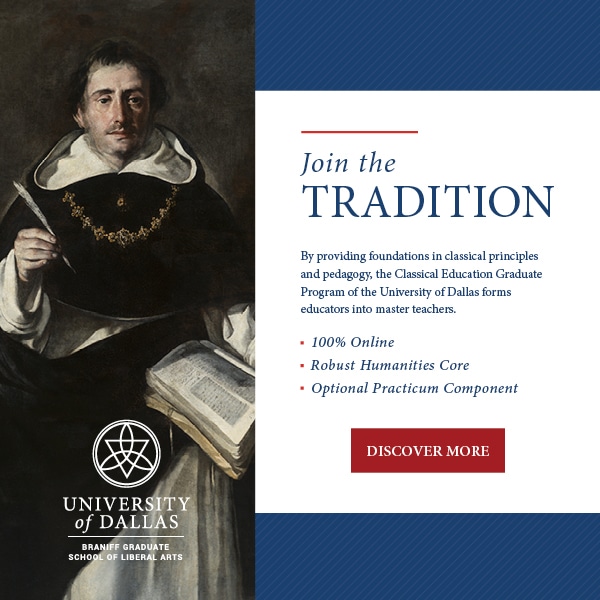On Parables, Fables, Stories, and Tales: A Tale of Two Sisters

Once upon a time, there were two sisters.
No, not the two step-sisters from Cinderella, although I can guess that for some of you, that’s who came to mind. Or, perhaps, if you’re like me, you thought of Austen’s Lizzy and Jane. Those sisters would be a most amiable topic to dwell on for a while.
However, the story of the two sisters I’m thinking of is told in the Bible. One sister, perhaps the elder, was Martha. The other was Mary. With their famous brother, Lazarus, these two sisters have joined the ranks of the Bible’s most well-known people.
Although not strictly a “parable” in the New Testament sense (it is not an illustrative tale told by Jesus; it is an event recounted in the New Testament) their story is parable-like — as so many in the Bible are — and it is often treated that way when we think about and discuss it. It is multi-faceted and definitely sticky.
These sisters have been with me for many years, through the various seasons of my life. Their story is one that has resonated deeply. I have no doubt this is because I am a woman. Surely their story has something special to teach me about being a woman who follows Christ? Surely God has some special message for my sex when He chooses to instruct me about myself and about himself through their tale? How many times have I asked myself questions like, “Am I a Mary or a Martha?” and “What are the implications of being one or the other?”
Then again, as a long-time student and a teacher — and because of the iconic image of Mary sitting attentively at the feet of her instructor — I am also sure that the story has something to show me about how to be both a student and a teacher. Furthermore, I am just as sure that the meaning and purpose of their story transcends me personally and individually in every possible way, expressing universal truths that apply to all human beings.
Through the years, I pondered the “likely stories” (that is, the various interpretations) of the tale, in which Martha complains to Jesus that she is doing all the work while her sister Mary sits by, seemingly idle. Jesus, in what is both a predictably unexpected as well as an apparently radical move, corrects Martha instead of rebuking Mary.
This situation flies in the face of several obvious principles and traditions. One, providing welcome and hospitality is one of the highest goals of the Christian life. Two, serving others is a fundamental characteristic of a Christian. Three, traditionally a woman’s role — especially as hostess (if that is indeed Martha’s role here) — would be precisely to busy herself personally with the details of serving her guests. Four, it would not appear fitting for Mary to disregard her sister’s wishes; after all, the text suggests this may be Martha’s home, and Mary would no doubt have been expected to follow her sister’s leadership. Neither would it seem appropriate for Mary to sit directly at Jesus’ feet, as though a disciple, given (at least insofar as I understand it) that men and women were typically segregated in the Temple and that women were not generally taught directly by a Rabbi.
So, how can it be that Jesus admonishes Martha and commends Mary?
This discrepancy between contextual norms and Jesus’ actions is captivating. Jesus’ words are compelling. Here’s one possible reason why: In the 21st century, we all know that the question of whether Mary and Martha were fulfilling their societal expectations is a pertinent one for us. We continue to clamorously struggle with the premise that women should be liberated from their bondage to what we term cultural biases. It easily seems that Jesus is upending the status quo, as he did so often, and we could quite readily stop right there and be content. Jesus is saying that women should be set free from the tyranny of their culturally-imposed roles, right?
Not so fast. I think most of us who read this story find — whether or not we agree with that conclusion — that we cannot stop there. That conclusion is unsatisfying; its lack of nuance discredits it. After all, this is not a mathematical proof where sheer simplicity contributes to its elegance. It is a parable-like tale, and while there are always simplistic readings of such tales, it is generally true that the implications extend beyond rather than settle in on a one-dimensional message. Judging by the multitude of commentaries available concerning this story, and by the fact that people are still asking questions about it centuries after it occurred, it makes sense to suspect there is more to the story.
This fact demonstrates the stickiness of Mary and Martha’s tale. If their story were an epic poem or a book, we’d be calling it a classic for being able to withstand — at least in this respect — the test of time. Centuries ago the incident occurred, it was recorded, and we read it now only to find it so pertinent to our own times that it could have been written yesterday (put another way, this is profound testimony to the timeless relevance of Scripture). And it would be effortless to view their story that way…
However, that isn’t what we will do, for we are here to walk together through “parables of sunlight,” not to herd the golden calves of our modern times.
Instead we’ll start by summarizing some of the take-aways from the story. I’m sure many of you will have heard most or all of them in sermons, commentaries, or Bible studies. At one point or another, each of these insights into the “moral of the story” of Mary and Martha have made sense to me. They have instructed me. As with so many tales like this, all are fascinating aspects of a unified idea, each with a different flavor and emphasis.
Be Not Distracted: This understanding sees Jesus’ rebuke of Martha as a reminder that she should put aside her “busyness.” The Greek word is perispaō, which means to be “over-occupied.” I like the King James translation, which renders it as “cumbered,” hitting on the truth that such over-activity is a kind of millstone. As Jesus so often encouraged, he is urging Martha to cast away the weight she carries and rest in his presence. He is inviting her to taste of a perpetual Sabbath.
Give it to God: Martha is being controlling. She is doing well in desiring to be hospitable, but she is overcome by her own objectives. She not only wants Mary to do it Martha’s way, but she appears to want Jesus to see to it that Mary complies. Again, the Greek word in the text may give insight into Martha’s action. The Greek word used to describe how she approaches Jesus is ephistēmi. It means “to place at, place upon, place over” with a secondary implication of “standing over, or placing one’s self above.” Martha is not only placing herself over Mary (which perhaps, in the traditional perspective, she is justified in doing if she is the elder sister and Mary likely lives in Martha’s home), but above Jesus himself. In response, he reproaches Martha with exquisitely loving gentleness when he acknowledges her “care-fulness.” The Greek here is merimnaō, meaning “to be anxious and troubled with care – but it also carries the implication of seeking to promote one’s own interests — something which Martha is clearly doing. In reproaching her, Jesus tenderly puts Martha in her place.
Fear Not: Martha is worried about many things. The Greek word is thorybazō, “troubled in mind,” “disquieted.” Jesus perceives that Martha is anxious for a multitude of reasons. Possibly, Martha feels overwhelmed by her task. Perhaps she also wants to make sure — like the elder brother in the parable of the prodigal son — that Mary does what Mary “ought.”
Martha doesn’t want Mary to get away with shirking any duties. It isn’t fair for Martha to do more than her share while Mary flouts responsibility, is it? In addition, perhaps Martha is resentful because Mary has left the path of acceptable norms. It isn’t just that Martha is left to do all the work; maybe she is offended by Mary’s lack of conformity. On top of that, Martha may feel Mary’s impropriety is not only negligent and indecorous, but rejects Martha’s own personal authority. Isn’t it also possible that Martha fears that the company present will judge not only Mary, but Martha herself? Being concerned with her witness, Martha probably wishes everything to reflect well on her and her household. The thought that she might be publicly disrespected by her sister, and her household found wanting in propriety, concerns her (don’t forget, the disciples themselves — true to the human character — could be competitive and critical). When Jesus admonishes Martha, he is saying, as he so often does, “fear not” and he is offering her his hand to raise her out of anxiety. In the case of the context of the story, it is clear Jesus is telling her that, instead of “minding all her p’s and q’s,” she should be minding his. Jesus’ censure is a lesson to Martha: her disquieted, fearful, spirit arises not from Mary, but from Martha’s own personal expectations, self-absorption, and pride.
Be Still and Know That I Am God: Jesus’ praise of Mary affirms the value of stillness, attentive study, and contemplation before the face of God. He is praising Mary for her focus on him, for her desire to dwell in his presence in a way that overshadows all other things. Jesus is therefore rebuking Martha for her lack of veneration, for imposing her aspirations upon him, and ultimately for relying on her own understanding rather than seeking to know his mind and follow him.
All these readings of the story ring true. And, having realized by adulthood that I am more of “Mary” than a “Martha,” I always rather liked what the story seemed to be saying. I enjoyed the confirmation of my own nature. Therefore, the story not only resonated, but it pleased me. I eschewed “busyness” for the sake of filling in the compartments of social expectations and in order to feel productive and useful (for my “Mary,” this always smacked too much of materialism and pragmatism) in favor of learning for the sake of learning itself, in pursuit of the Socratic dictum that only the examined life is worth living while seeking the true, good, and beautiful. (Hence my decision to attend St. John’s College, despite the fact that the overwhelming response to this from so many was to ask me, “What on earth will you ever do with that education?”) It seems to me, as a human being faced with the inevitable insecurities, challenges, and tensions of life, that only the most obstinately willful or deeply cynical would not appreciate the restful comfort offered by Jesus here. As a woman drawn to ideas, to long conversations, and to contemplation, this reinforcement of my natural proclivities was not simply welcomed but liberating. It was permission for me, in the postmodern utilitarianism of the world in which I lived, to be a “Mary.”
And yet…despite the fact that so much about this story spoke in such a positive way to me, the tale stuck. It wasn’t settled. It lingered. It disconcerted me. I experienced a tugging suspicion that all of those explanations, all of those “morals of the story,” though true enough, were, in the end, not actually enough.
After all, Martha had a point, didn’t she? She was trying to fulfill her call to hospitality and her responsibilities. She was trying to love and serve her neighbors. She was trying to live up to what she saw were the expectations of the community she cherished — including, it seems from the way in which she so familiarly approaches Jesus, the expectations she believed would be those of Jesus himself. Assuming — according to one obvious reading of the text — that she was tasked with the procuring, preparation, and presentation of the meal, her experience would tell her that the food would not come to the table by itself (apparently she had not heard, or could not fully absorb, how Jesus fed the 5000; otherwise she, as his mother Mary once requested wine, might simply have asked him for their daily bread). It is a fact that in this world we cannot naively expect all our needs to miraculously be met, isn’t it? We must not just think and believe, we must act. Indeed, more than that, as creatures made in the image of God we must by nature produce and create. Martha knew this. As do I. And while Mary might have had a clear justification for her ease of contemplation while in the physical presence of Jesus, I do not.
Or…do I?
The waters of the river of this tale need more sifting. Seeking more sunlight, I should gaze upon the rest of the story. For, the narrative about Mary and Martha, and their interactions with Jesus, does not stop with his compassionate reproof of Martha. It flows “further up and further in.” In fact, remember this is “a tale of two sisters.” This first portion of the tale compliments Mary, yet, as you perhaps have now guessed, the second portion is entirely Martha’s moment. But that’s another story — which, like this one, is a smaller tale within a larger — and I’ll leave it for the next installment.
Kate Deddens
Kate Deddens attended International Baccalaureate schools in Iran, India, and East Africa, and received a BA in the Liberal Arts from St. John’s College in Annapolis, Maryland and a MA in Mental Health therapy from Western Kentucky University. She married her college sweetheart and fellow St. John’s graduate, Ted, and for nearly three decades they have nurtured each other, a family, a home school, and a home-based business. They have four children and have home educated classically for over twenty years. Working as a tutor and facilitator, Kate is active in homeschooling communities and has also worked with Classical Conversations as a director and tutor, in program training and development, and as co-author of several CCMM publications such as the Classical Acts and Facts History cards. Her articles have sporadically appeared at The Imaginative Conservative, The Old Schoolhouse Magazine, Teach Them Diligently, and Classical Conversations Writers Circle.










